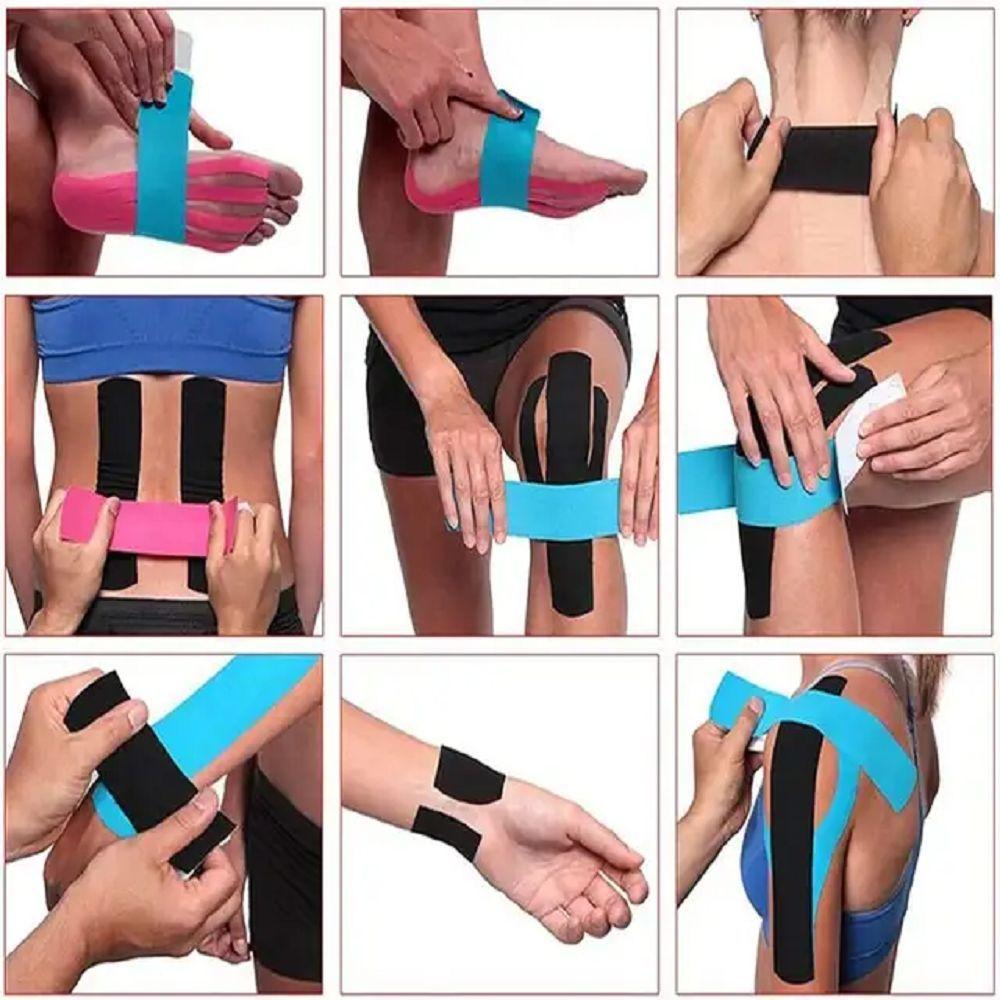Understanding the Science behind Kinesiology Tape

Kinesiology taping, also known as kinesio taping or KT taping, is a technique that uses elastic therapeutic tape applied to the skin over muscles and joints. The tape is stretched by about 10–25% during application to provide a lifting effect under the skin. It is believed to help reduce pain and improve muscle function.
History of Kinesiology Taping
Kinesiology taping was developed in the 1970s by Dr. Kenzo Kase, a Japanese chiropractor and physiotherapist. He noticed that the elastic qualities of sports tape could be used to support muscles without restricting movement like traditional strapping or bandaging. Over the years, kinesiology taping has gained popularity in treating sports injuries and pain. It is now used by physical therapists, chiropractors, trainers and athletes worldwide.
How Does it Work?
The proposed mechanisms of how kinesiology taping works include:
- Lymphatic drainage: The slight rise and fall of the skin with movement is thought to encourage lymphatic flow and drainage of fluids under the skin. This may help reduce swelling and pain.
- Proprioception: The tension of the tape on the skin provides sensory feedback that may help correct muscle imbalance or improper movement patterns.
- Circulation: By gently lifting the skin, kinesiology tape is believed to improve blood and nutrient circulation to injured tissues for faster healing.
- Spinal/postural alignment: Taping specific muscles can influence joint alignment and range of motion to correct posture and reduce pressure on sensitive areas.
However, the scientific evidence supporting these proposed mechanisms is still limited. More research is needed to fully understand how and why kinesiology taping may be effective.
Common Uses of Kinesiology Tape
Some common athletic and therapeutic uses of kinesiology tape include:
- Shoulder issues: Taping the rotator cuff muscles is used for shoulder impingement, instability, and subacromial bursitis pain relief.
- Low back pain: Taping the muscles of the lower back can provide support for strained or injured backs.
- Tennis/golfer’s elbow: Placing tape on the tendons around the elbow is used to reduce inflammation from these overuse injuries.
- Knee pain: Taping is applied around the knee cap and lower thigh muscles for conditions like patellofemoral pain syndrome, iliotibial band syndrome and knee sprains/strains.
- Plantar fasciitis: Taping the bottom of the foot, especially along the arch, may lessen heel spur and fascia pain.
- trigger point therapy: Tape placements are used to deactivate trigger points and relieve muscle knots or spasms.
Applying Kinesiology Tape Correctly
For kinesiology tape to be effective, it is important to apply it properly. A certified kinesiology taping practitioner can teach correct techniques for different conditions and areas of the body. Some general tips for application include:
- Clean and dry the skin before applying tape to remove oils, dirt or moisture.
- Stretch the tape to about 10–25% of its original length before placing it on the skin. This creates the desired lifting effect.
- Align tape along muscles following their natural fiber directions from origin to insertion points.
- Avoid direct placement over joints, bony prominences, skin wounds or infections.
- Tape can be worn for 3–5 days before removal and reapplication. Showering does not require retaping.
- Retape as needed, usually every 3–5 days as the old tape loses its elasticity and effect.
Benefits and Limitations of Kinesiology Taping
The potential benefits of kinesiology tape include pain relief, enhanced muscle function, increased circulation and range of motion. However, there are also limitations:
- Benefits are temporary, with effects lasting only 3–5 days per application as tape loses adhesion and elasticity.
- Limited or inconsistent scientific evidence that it works better than other therapies like ice, massage or bracing for injuries.
- Requires proper training to apply correctly for maximum effectiveness. Incorrect taping may compromises results.
- Not meant to replace other medical treatments — it is usually used as an adjunct to therapy, rehab exercises and proper care.
- Individual responses to kinesiology taping can vary greatly depending on the condition, severity and specific needs.
kinesiology tape is a simple, non-invasive option some find helpful for pain management and injury recovery when applied correctly to targeted areas as part of an overall treatment plan. More high-quality research is still warranted to fully understand its impact and advantages compared to alternative therapies.
French German Italian Russian Japanese Chinese Korean Portuguese
Get More Insights On Kinesiology Tape
| https://www.insightprobing.com/blog/kinesiology-tape/ |
About Author:
Ravina Pandya, Content Writer, has a strong foothold in the market research industry. She specializes in writing well-researched articles from different industries, including food and beverages, information and technology, healthcare, chemical and materials, etc. (https://www.linkedin.com/in/ravina-pandya-1a3984191)
- Art
- Causes
- Crafts
- Dance
- Drinks
- Film
- Fitness
- Food
- Giochi
- Gardening
- Health
- Home
- Literature
- Music
- Networking
- Altre informazioni
- Party
- Religion
- Shopping
- Sports
- Theater
- Wellness


